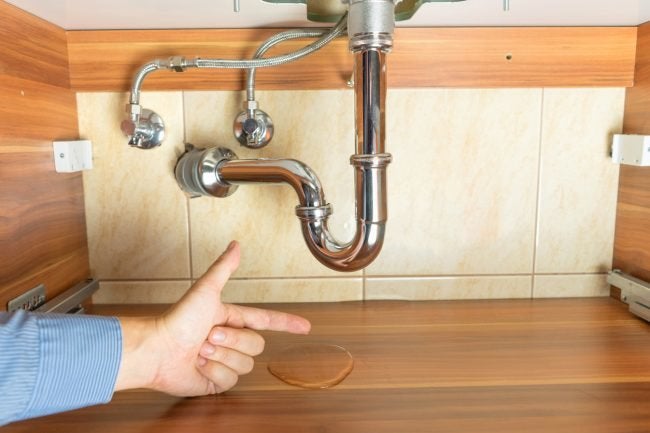Exactly how to Inspect If Your Home Has a Hidden Leakage
Exactly how to Inspect If Your Home Has a Hidden Leakage
Blog Article
Here down the page you will discover a bunch of decent news when it comes to Detecting hidden plumbing leaks.

Early discovery of leaking water lines can alleviate a potential calamity. Some small water leakages may not be noticeable.
1. Analyze the Water Meter
Checking it is a surefire way that assists you uncover leakages. If it moves, that indicates a fast-moving leakage. This means you may have a sluggish leakage that could even be below ground.
2. Examine Water Intake
If you find abrupt modifications, regardless of your usage being the very same, it implies that you have leakages in your plumbing system. A sudden spike in your bill shows a fast-moving leakage.
On the other hand, a steady increase each month, even with the very same practices, shows you have a slow leakage that's additionally gradually intensifying. Call a plumber to thoroughly check your residential property, particularly if you feel a warm location on your floor with piping underneath.
3. Do a Food Coloring Examination
30% comes from commodes when it comes to water usage. Test to see if they are running appropriately. Decrease specks of food shade in the storage tank and wait 10 mins. There's a leakage in between the container as well as dish if the color in some way infiltrates your dish during that time without flushing.
4. Asses Outside Lines
Don't forget to inspect your outdoor water lines as well. Test faucets by attaching a yard hose. Must water seep out of the link, you have a loose rubber gasket. Replace this and also make sure all links are tight. If you have actually obtained a lawn sprinkler, it will certainly assist get it properly analyzed and also maintained every year. One little leak can squander lots of water and surge your water costs.
5. Evaluate the circumstance and also inspect
Home owners ought to make it a routine to examine under the sink counters and also also inside cabinets for any bad odor or mold development. These 2 warnings show a leakage so punctual attention is required. Doing routine inspections, even bi-annually, can save you from a major problem.
If you recognize your residence is currently old, keep a watchful eye on your heating systems, hose pipes, pipes and so on. Check for discolorations as well as weakening as the majority of appliances as well as pipelines have a life span. They will certainly additionally naturally wear away due to tear as well as wear. Don't wait for it to rise if you believe dripping water lines in your plumbing system. Call a specialist plumber right away so you do not wind up with a horrible mess in your house.
Early detection of leaking water lines can alleviate a possible disaster. Some tiny water leakages may not be visible. Checking it is a surefire method that helps you discover leaks. One small leak can waste loads of water and also increase your water expense.
If you suspect dripping water lines in your plumbing system, do not wait for it to rise.
WARNING SIGNS OF WATER LEAKAGE BEHIND THE WALL
PERSISTENT MUSTY ODORS
As water slowly drips from a leaky pipe inside the wall, flooring and sheetrock stay damp and develop an odor similar to wet cardboard. It generates a musty smell that can help you find hidden leaks.
MOLD IN UNUSUAL AREAS
Mold usually grows in wet areas like kitchens, baths and laundry rooms. If you spot the stuff on walls or baseboards in other rooms of the house, it’s a good indicator of undetected water leaks.
STAINS THAT GROW
When mold thrives around a leaky pipe, it sometimes takes hold on the inside surface of the affected wall. A growing stain on otherwise clean sheetrock is often your sign of a hidden plumbing problem.
PEELING OR BUBBLING WALLPAPER / PAINT
This clue is easy to miss in rooms that don’t get much use. When you see wallpaper separating along seams or paint bubbling or flaking off the wall, blame sheetrock that stays wet because of an undetected leak.
BUCKLED CEILINGS AND STAINED FLOORS
If ceilings or floors in bathrooms, kitchens or laundry areas develop structural problems, don’t rule out constant damp inside the walls. Wet sheetrock can affect adjacent framing, flooring and ceilings.
https://www.servicemasterbyzaba.com/blog/how-to-detect-water-leakage-in-walls/

As a fervent reader about Finding hidden leaks, I imagined sharing that excerpt was beneficial. Kindly set aside a second to distribute this blog post if you appreciated it. Many thanks for your time. Don't hesitate to pay a visit to our website back soon.
Report this page